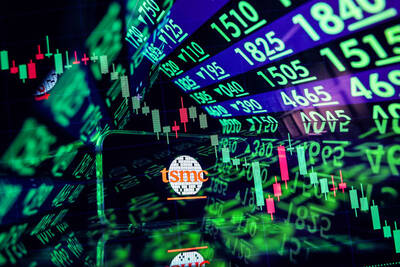The global mobile phone market grew 6.1 percent in the fourth quarter of last year, the lowest annual growth rate in the past two years, because of soft demand for feature phones, according to analysts at research firm International Data Corp (IDC).
Cellphone vendors shipped 427.4 million units in the fourth quarter of last year compared to 402.8 million units in the same period of 2010, as the feature phone market declined faster than anticipated, according to IDC.
The 6.1 percent year-on-year growth was higher than IDC’s forecast of 4.4 percent for the quarter, but weaker than the 9.3 percent growth in the third quarter of last year.
“The mobile phone market exhibited unusually low growth last quarter, which shows it is not immune to weaker macroeconomic conditions worldwide,” said Kevin Restivo, a senior research analyst at IDC.
“The introduction of high-growth products, such as the iPhone 4S, which shipped in the fourth quarter, bolstered smartphone growth,” Restivo said.
“Yet overall market growth fell to its lowest point since the third quarter of 2009, when the global economic recession was in full bloom,” Restivo added.
While smartphones continue to grow in popularity, feature phones still accounted for a majority of shipments from four of the five market leaders during the fourth quarter, because of lower prices and ease of use, the research firm said.
IDC said that Samsung Electronics Co, HTC Corp (宏達電) of Taiwan and LG Electronics Inc have dominated the Android smartphone market in the Asia-Pacific region, excluding China, while Windows Phones also gained some momentum in the region thanks to sales of the HTC Titan and the HTC Radar, as well as the Nokia Lumia series.
HTC also made important gains in the North American market with the launch of long-term evolution smartphones, along with similar models from LG, Motorola Mobility Holdings Inc and Samsung, the research firm said.
Among the top five vendors, Nokia Corp remained in first place with a 26.6 percent share during the fourth quarter, but the Finnish cellphone maker continued to lose ground to rivals as its new Lumia Windows Phones had captured fewer users than the company anticipated.
South Korea’s Samsung trailed closely, with a 22.8 percent market share, as it broke the 90 million unit mark for the first time in a single quarter, while Apple Inc jumped from fifth to the third spot with an 8.7 percent share globally, thanks to the wide availability of the iPhone 4S.
South Korean manufacturer LG Electronics Inc and China’s ZTE Corp (中興) ranked fourth and fifth, taking 4.1 percent and 4 percent shares, respectively, with fewer than 1 million units separating the two vendors.

Taiwan Semiconductor Manufacturing Co (TSMC, 台積電) last week recorded an increase in the number of shareholders to the highest in almost eight months, despite its share price falling 3.38 percent from the previous week, Taiwan Stock Exchange data released on Saturday showed. As of Friday, TSMC had 1.88 million shareholders, the most since the week of April 25 and an increase of 31,870 from the previous week, the data showed. The number of shareholders jumped despite a drop of NT$50 (US$1.59), or 3.38 percent, in TSMC’s share price from a week earlier to NT$1,430, as investors took profits from their earlier gains

In a high-security Shenzhen laboratory, Chinese scientists have built what Washington has spent years trying to prevent: a prototype of a machine capable of producing the cutting-edge semiconductor chips that power artificial intelligence (AI), smartphones and weapons central to Western military dominance, Reuters has learned. Completed early this year and undergoing testing, the prototype fills nearly an entire factory floor. It was built by a team of former engineers from Dutch semiconductor giant ASML who reverse-engineered the company’s extreme ultraviolet lithography (EUV) machines, according to two people with knowledge of the project. EUV machines sit at the heart of a technological Cold

TAIWAN VALUE CHAIN: Foxtron is to fully own Luxgen following the transaction and it plans to launch a new electric model, the Foxtron Bria, in Taiwan next year Yulon Motor Co (裕隆汽車) yesterday said that its board of directors approved the disposal of its electric vehicle (EV) unit, Luxgen Motor Co (納智捷汽車), to Foxtron Vehicle Technologies Co (鴻華先進) for NT$787.6 million (US$24.98 million). Foxtron, a half-half joint venture between Yulon affiliate Hua-Chuang Automobile Information Technical Center Co (華創車電) and Hon Hai Precision Industry Co (鴻海精密), expects to wrap up the deal in the first quarter of next year. Foxtron would fully own Luxgen following the transaction, including five car distributing companies, outlets and all employees. The deal is subject to the approval of the Fair Trade Commission, Foxtron said. “Foxtron will be

INFLATION CONSIDERATION: The BOJ governor said that it would ‘keep making appropriate decisions’ and would adjust depending on the economy and prices The Bank of Japan (BOJ) yesterday raised its benchmark interest rate to the highest in 30 years and said more increases are in the pipeline if conditions allow, in a sign of growing conviction that it can attain the stable inflation target it has pursued for more than a decade. Bank of Japan Governor Kazuo Ueda’s policy board increased the rate by 0.2 percentage points to 0.75 percent, in a unanimous decision, the bank said in a statement. The central bank cited the rising likelihood of its economic outlook being realized. The rate change was expected by all 50 economists surveyed by Bloomberg. The